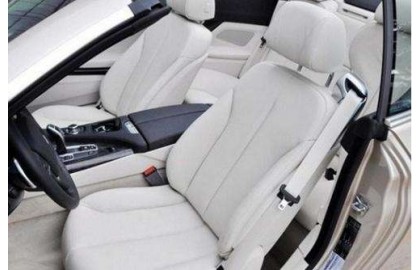The main structural components of car seat belts

Car seat belts, also known as seat belts, are a type of occupant restraint device. Car seat belts are recognized as the cheapest and most effective safety devices. Many countries are obliged to equip seat belts in vehicle equipment.
The main structural components of car seat belts
(1) Webbing Webbing is a belt with a width of about 50mm and a thickness of about 1.2mm woven with synthetic fibers such as nylon or polyester. According to different uses, the strength and elongation required by the seat belt are achieved by weaving methods and heat treatment. and other characteristics. It is also the part that absorbs the energy of conflict. National regulations have different requirements for the performance of seat belts.
(2) The retractor is a device that adjusts the length of the seat belt according to the sitting posture and body of the occupant, and retracts the webbing when not in use.
Divided into ELR (Emergency Locking Retractor) and ALR (Automatic Locking Retractor).
(3) Fixing mechanism The fixing mechanism includes a buckle, a lock tongue, a fixing pin and a fixing seat. The buckle and tongue are the devices that fasten and unfasten the seat belt. Fixing one end of the webbing to the body is called a fixing plate, the fixing end of the body is called a fixing seat, and the fixing bolts are called fixing bolts. The position of the shoulder seat belt fixing pin has a great influence on the convenience of wearing the seat belt. Therefore, in order to suit passengers of various sizes, an adjustable fixing mechanism is generally used, which can adjust the position of the shoulder seat belt up and down.
Performance of car seat belts
(1) Seat belt design elements Seat belts should be designed to meet the requirements of occupant protection performance, reminder to use seat belts, comfort and convenience. The design tools that enable the above points to be achieved are the choice of seat belt adjuster position, the size of the seat belt, and the auxiliary devices employed.
(2) Occupant protection performance The occupant protection performance requirements of automobile seat belts are as follows: restrain the occupant as soon as possible; minimize the pressure on the occupant during restraint; keep the restraint position unchanged, so that the restraint force avoids the weaker parts of the human body . The use of the pretensioners and force limiters described above, as a means to achieve the above objectives, results in a significant improvement in performance in these areas.
